If you’ve spent even a brief moment in the floral world, I’m sure you’ve discovered Sarah Ryhanen’s work! In addition to being an all out floral powerhouse, she’s built the thriving Brooklyn based floral studio SAIPUA and is training the new generation of floral designers through her Little Flower School workshops all over the world. I’m thrilled to have her sit down and share a little of what’s brewing in her world these days.
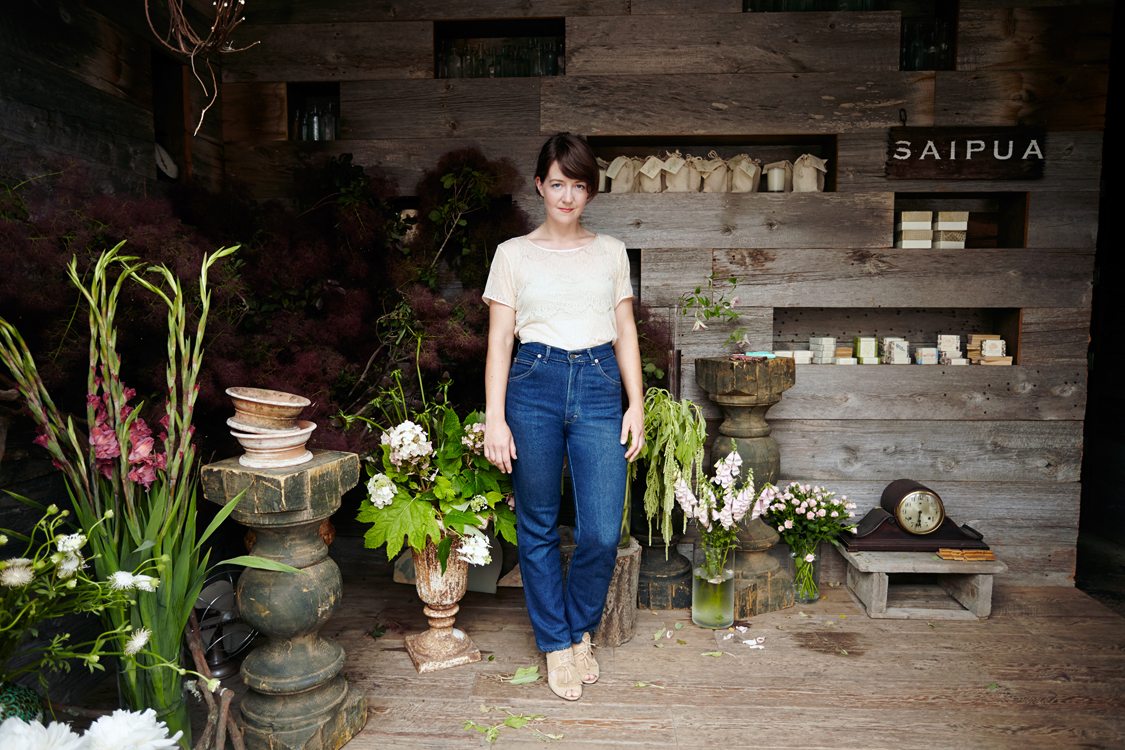 Erin: You co-Founded The Little Flower School with Nicolette Owen and offer phenomenal classes where you teach your loose, natural design style and strong focus on seasonal flowers. I’m curious, do many of your students come to you with prior floral design experience? And do you find that it is it easier or more difficult for students to learn your techniques if they have a background in traditional, conventional floristry?
Erin: You co-Founded The Little Flower School with Nicolette Owen and offer phenomenal classes where you teach your loose, natural design style and strong focus on seasonal flowers. I’m curious, do many of your students come to you with prior floral design experience? And do you find that it is it easier or more difficult for students to learn your techniques if they have a background in traditional, conventional floristry?
Sarah: Maybe 70% of our students are florists or people who are considering switching careers to become florists. The other 30% are just enthusiasts; gardeners or people who work in creative feilds who’d like to experiment with flowers as a new approach to the tactile nature of working with color and form.
Students who have been trained in the classical style definitely struggle with our method of loosely arranging flowers. It’s easier to train a novice sometimes. Some of my best designers at Saipua have started as flower novices. That domed, round tight ball is just so imbedded in our flower culture!
Erin: You’re taking The Little Flower School on the road and offering it in some fascinating locations. How do you choose where to have your classes? Do you have a particular strategy to source your floral materials when you’re “on location?”
Sarah: We go where the best flowers are really. I just got back from the UK; talk about a great place for flowers — the history of gardening and floraculture there is so rich. I didn’t have nearly enough time to spend seeing all the flowers and gardens and people I wanted to. Let alone the castles. They’ve definitely got that going on.
For both Nicolette and I the traveling of the classes is just as much about the two of us getting to visit great flower growers and flower places as it is about sharing our methods. Teaching can be rather repetative and for me traveling keeps it fresher and keeps me from feeling burned out in my own design work. It’s pretty amazing to go to a place, learn about the flowers available in that city and then share those resources with the students who show up for the class. Lots of time they’re like “Wow I didn’t know this farm was even here!” or “I didn’t realize they grew flowers!”
In terms of finding flowers we just cold call a lot, or use the network of folks we’ve built over the years to seek out growers/gardeners. We’re lucky to have such a strong international group of growers/designers who are open to sharing sources and helping us. It’s become a much friendlier flower world than it was 8 years ago when I started.
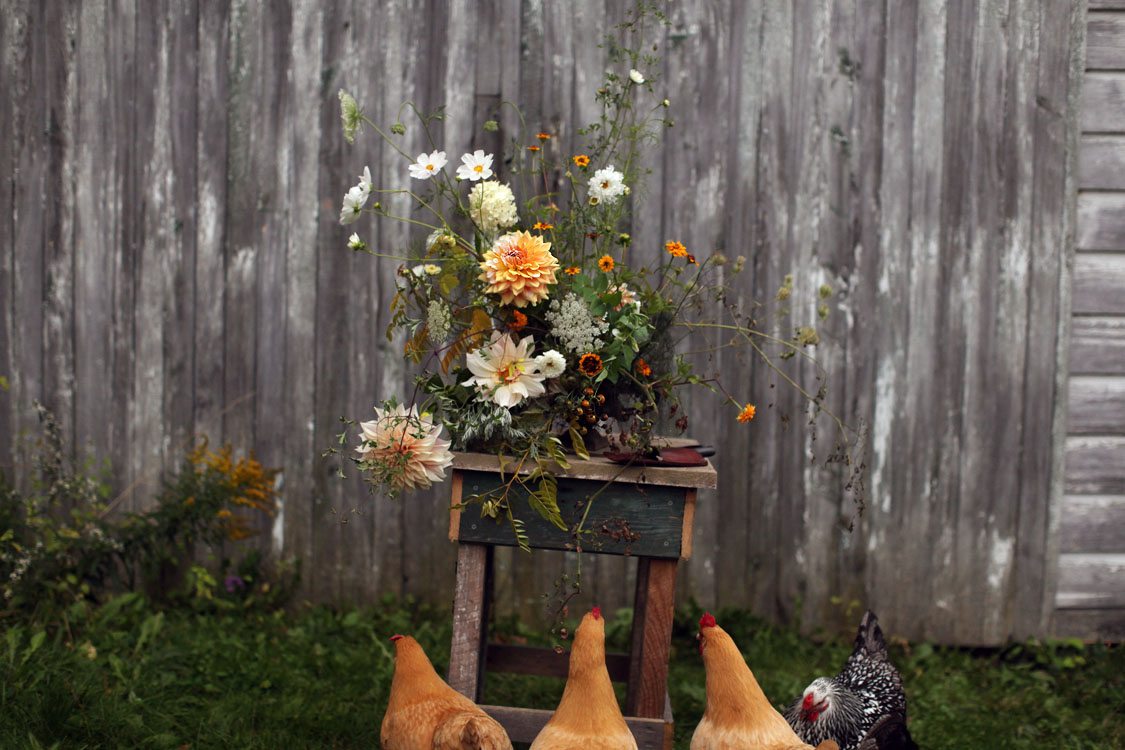 Erin: You’ve written that you and Nicolette love to drive to the middle of nowhere with clippers and cameras. Sounds like my kind of fun! Care to share a memorable moment from, as you say, “going deep”?
Erin: You’ve written that you and Nicolette love to drive to the middle of nowhere with clippers and cameras. Sounds like my kind of fun! Care to share a memorable moment from, as you say, “going deep”?
Sarah: Ha! Well probably the craziest car ride we took was to Barry Glick’s place (Sunshine Farm) in West Virginia searching for Hellebore a few years ago. He lives on top of a mountain in the middle of nowhere. He’s known as the ‘Hellebore King’ although he may have coronated himself. Regardless, he has one of the largest collections of hellebores I can think of and he does great work breeding them. We went to see him and his 7 acre hillside of hellebore in bloom. At one point I thought we should turn around, the road up the mountain was so bad. We made it to the top and our truck was rushed by a pack of Barry’s dogs and horses.
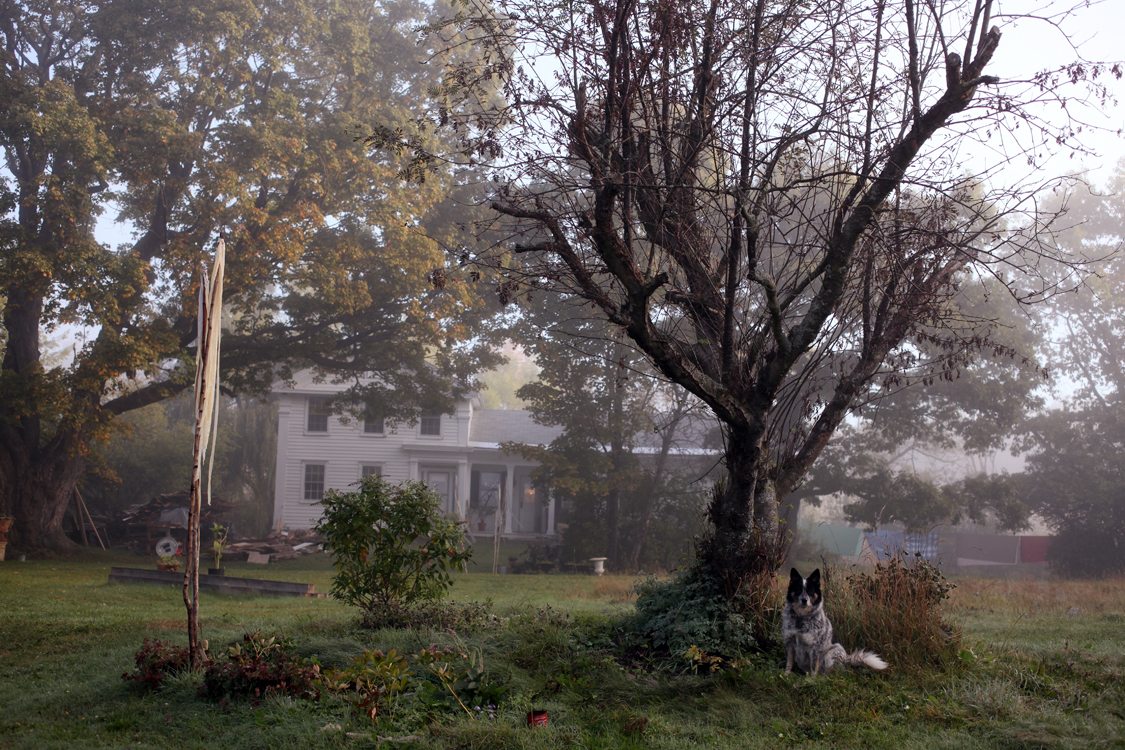 Erin: I’m fascinated and thrilled by the trend of high end designers–like you—starting flower farms or cutting gardens in order to source high quality seasonal flowers. Can you share a little more about how you came to the decision to start World’s End Farm in upstate New York?
Erin: I’m fascinated and thrilled by the trend of high end designers–like you—starting flower farms or cutting gardens in order to source high quality seasonal flowers. Can you share a little more about how you came to the decision to start World’s End Farm in upstate New York?
Sarah: Well there’s two reasons or more I guess. Eric and I couldn’t afford to buy realestate in Brooklyn where our business is based. The prices there are insane. Besides, I’ve always wanted to live in the middle of nowhere. I wanted to play around with gardening. We started looking around upstate. We found this farm on our 2nd trip up, this was 2011. It felt perfect, a historical small farm house, 20 or so acres of cleared fields, streams, ponds, a beautiful barn. All set on 107 acres far from the road. $200,000. We scrambled to get our act together and figure out how to buy it. 9 months later we closed and then looked at the soil. Heavy clay and rocks. It’s workable but with lots of effort. Our plan is to focus on perennials and pasture land. In the meantime we have lots of rock picking parties and have to spend a lot of money on compost to loosen the clay. Why didn’t I look at the soil? Because I wasn’t a farmer, wasn’t even a gardener. If I was, I’d also have noticed that the entire property is a basically a wetland from March-June which gives us a tough time getting started in the spring. Oh well! It’s not the easiest place to farm, but it suits us.
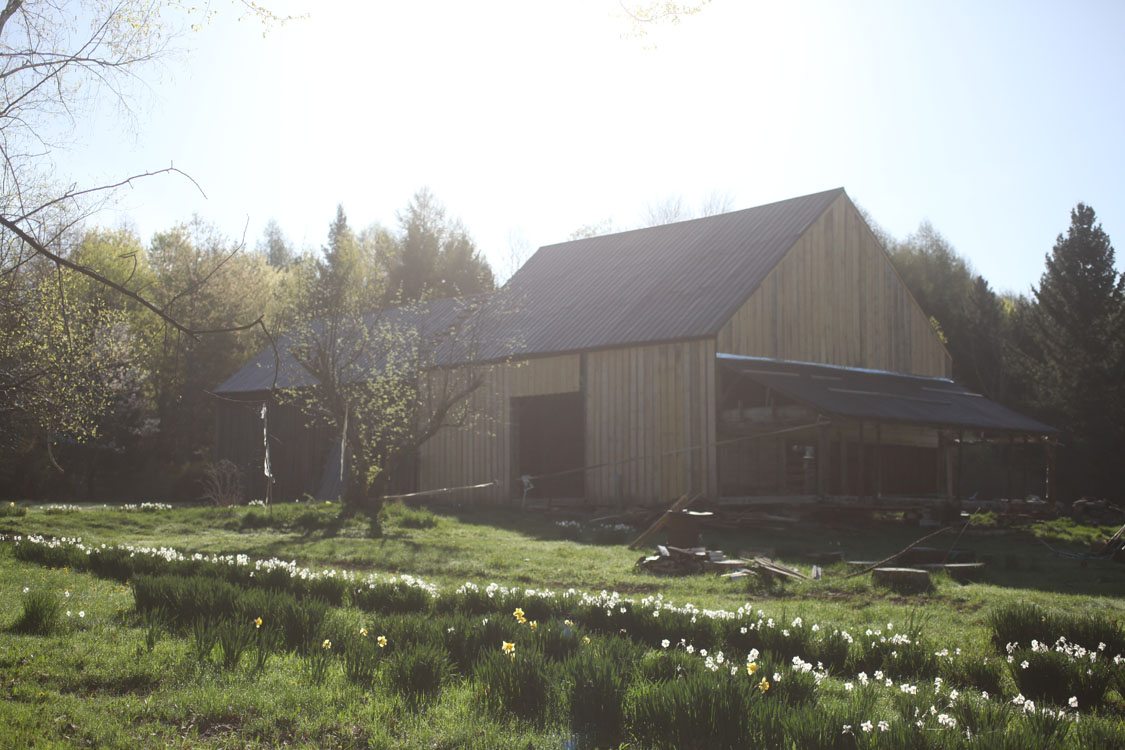 Erin: What have been some of the more challenging aspects of flower farming for you?
Erin: What have been some of the more challenging aspects of flower farming for you?
Sarah: Well the life lesson here is patience for me. I am pretty hooked on instant gratification. I’m impulsive, and short tempered, I don’t like sticking with things…you can see where this is going. The most difficult thing for me here is getting used to not knowing. There are so many things I just don’t know. I don’t know what I’m doing in the field, I don’t know what the weather is going to do in two weeks, etc. With flower arranging you have so much control and you can make something beautiful in the matter of a few minutes. The two things are like night and day.
I know I need this lesson in my life, that ultimately these tough years will build character and resolve. Doesn’t make it easier though.
Erin: Are there any things that have been surprisingly easy? Or at least easier than you thought?
Sarah: No, nothing has been suprisingly easy, and I resent you for asking that question! Joking aside, maybe one thing that has gotten easier, or changed for the better is my persepective on arranging flowers. Since I’ve had a few years of tinkering with gardening and growing I have gotten so much more sensitive to seasons. If an arrangement has a fruit and peonies in it I notice right away how wrong that feels. It’s not to say I don’t still occasionally buy the out of season ranunculus to make a design do what I need it to, but I am much more aware of that incongruity when I see it.
Designing flowers at the farm has gotten easier too. When you can go select exactly what you want from the field, it just makes the job of putting them together so much smoother. I feel like the luckiest flower arranger in the world during peak season here.
Erin: You’ve written that growing your own flowers has “unlocked a great world of unusual varieties that were previously unavailable to us in the cut flower market.” What are a few of those varieties? Any new varieties you are particularly excited about growing this season?
Sarah: Many of those things are the unexplainables…the pieces of june berry tree that are delightfully crooked, the heuchera leaves that are mottled and speckled with a bit of disease, the wild grapevine that grows everywhere here that I can pull down without worry that it will ever run out. These things come with very little effort and have already made this huge project worth our while.
The cultivated things I’m looking forward to…I invested pretty heavily (for me) in bearded iris from Schreiners last fall and am hoping for a crop late this spring. That is a flower that I adore that I just could not get certain varieties (the browns, the strange peaches) of in New York. I also am growing some campanula that I love (c. takeshima ‘bellringers’) and lots of aqueligia (a flower I see coming into focus in the next few years. I’ve got a chocolate nicotiana seeded in the basement that I hope works out…bronze fennel – doesn’t hold up but I’ll use it just for pictures or in my garden. I just ordered lots of clematis from Donahue’s (especially excited for some of the small flowering varieties (Macropetala blue, and then the Alpinas like ‘blue dancer’ and ‘pink flamingo’).
Last year clematis Tangutica did really well here, and so we’re planting more of that. Designers (by which I mean Nicolette because she’s requested the entire crop) go nuts for the silvery blue grey foliage and the small delicate yellow flowers. I love formosa lilies and we’re adding more this year. I can’t afford them this year, but next I’m going to invest in lots of Martagon lilies which are just to die for.
I also am adding more hellebore from the Gold Collection. We buy the plants in 1 gallon pots in February from a nursery in PA and then cut the flowers for desgin work in late winter. I hold the plants in the basement and then plant them out in spring. Double dipping is what I call it. That’s worked out well for us. I do the same for lots of other plants…for example I have a big wedding in a few weeks that I am I buying clematis Monatana’s for. We’ll use the plants to decorate the wedding, and then bring them here and put them in the ground. Clients appreciate that their flowers will live on to produce more flowers at the farm.
Erin: Like you, I love pushing the limits of what can be incorporated into floral designs. What’s one of the more unusual or non-traditional elements you’ve used?
Sarah:I love using baby eggplants and pea pods from the vegetable garden. I’ve started lots of little eggplants for this purpose this year. I also love the look of unripe (green/white) strawberries in arrangements. I am fanatic about ‘pink champagne’ currants. Just go crazy for them. In general anything graceful that comes out of the kitchen garden…currant tomatoes, sungolds, lettuce that’s gone to seed.
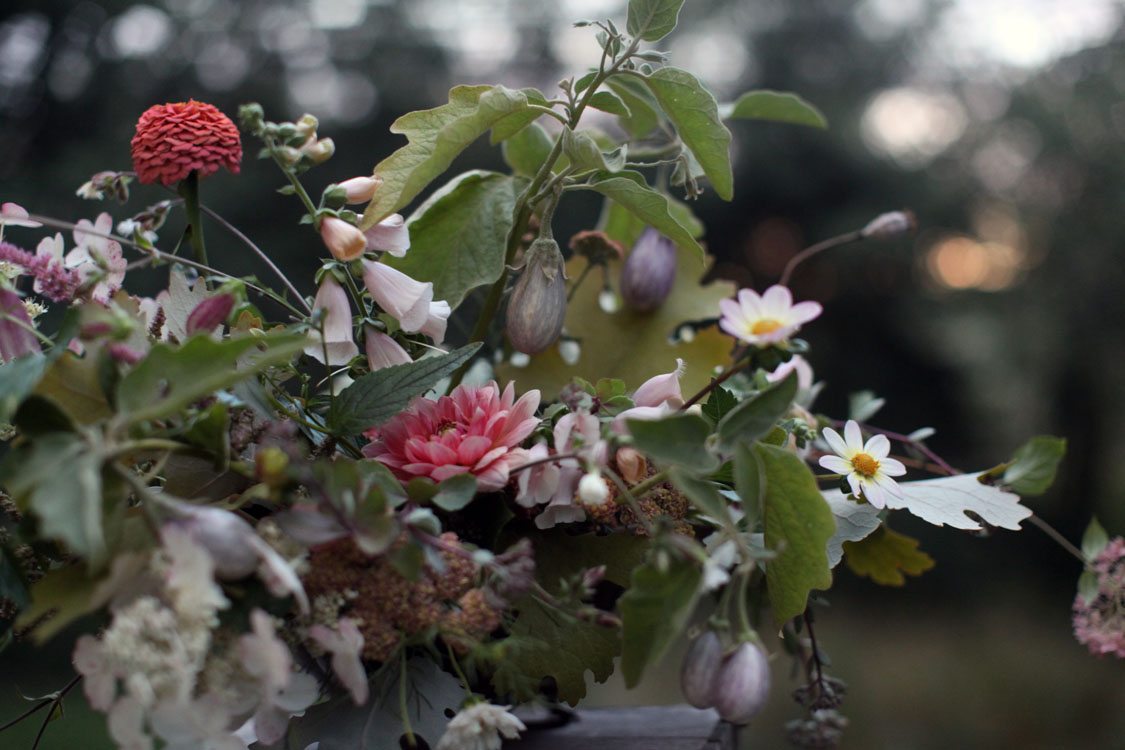 Erin: As you know, there is tremendous new interest in local, seasonal flowers—in no small part due to your influence and leadership. As someone on the leading edge of the seasonal floral design movement, I’m curious as to what you’re seeing and hearing and what your vision for the future is.
Erin: As you know, there is tremendous new interest in local, seasonal flowers—in no small part due to your influence and leadership. As someone on the leading edge of the seasonal floral design movement, I’m curious as to what you’re seeing and hearing and what your vision for the future is.
Sarah: This is such a hard question for me to answer, my thoughts lack any direction really. I think more designers are looking for flowers in their backyards, or looking to connect with those that grow their flowers. I think a lot of them are feeling like they have to start growing a bit themselves.
What is desperately needed in the flower world is a better way of communicating seasonallity and process to clients. It is a rampant disease — this thought that if you get your flowers locally from a grower they will be cheaper. I am thinking about this all the time. People are starting to understand this with food; most people would pay more for a bunch of asparagus grown locally than one imported from South America. The flower world follows the food world pretty much, we’ve seen the rise of the buzz word ‘local’ creep into the flower industry.
I think for me the way to help people understand the value of flowers is to involve them as much as I can in the process we have at Worlds End and Saipua. Clients get a pretty thorough tutelage on what it is we do every step of the way, whether it’s growing flowers ourselves, or buying the best stuff from our suppliers.
The bottom line is this — do you want your flowers from a factory halfway around the world or do you want flowers lovingly grown by someone you can have a relationship with? Thats where the value comes in.
We all know this…our job is to work in both obvious and subversive ways to spread these ideas around so that people start placing paying more attention to flowers and start seeking out local stems. Everyone should have flowers in their homes everyday. Flowers need to come out of the ‘special occasion’ closet. Flowers make people feel good. This is what it is to be human, to admire beauty, to indulge in the unnecessary. Plus, we’ve got to plant more flowers to save the bees. That’s another discussion for another day.

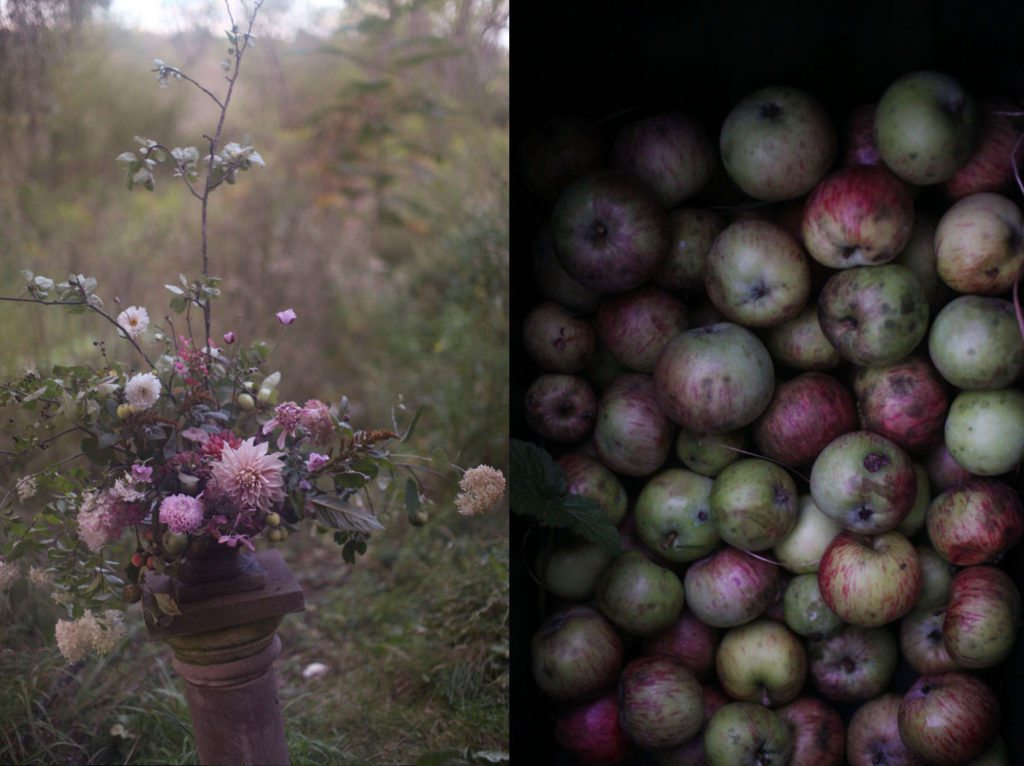
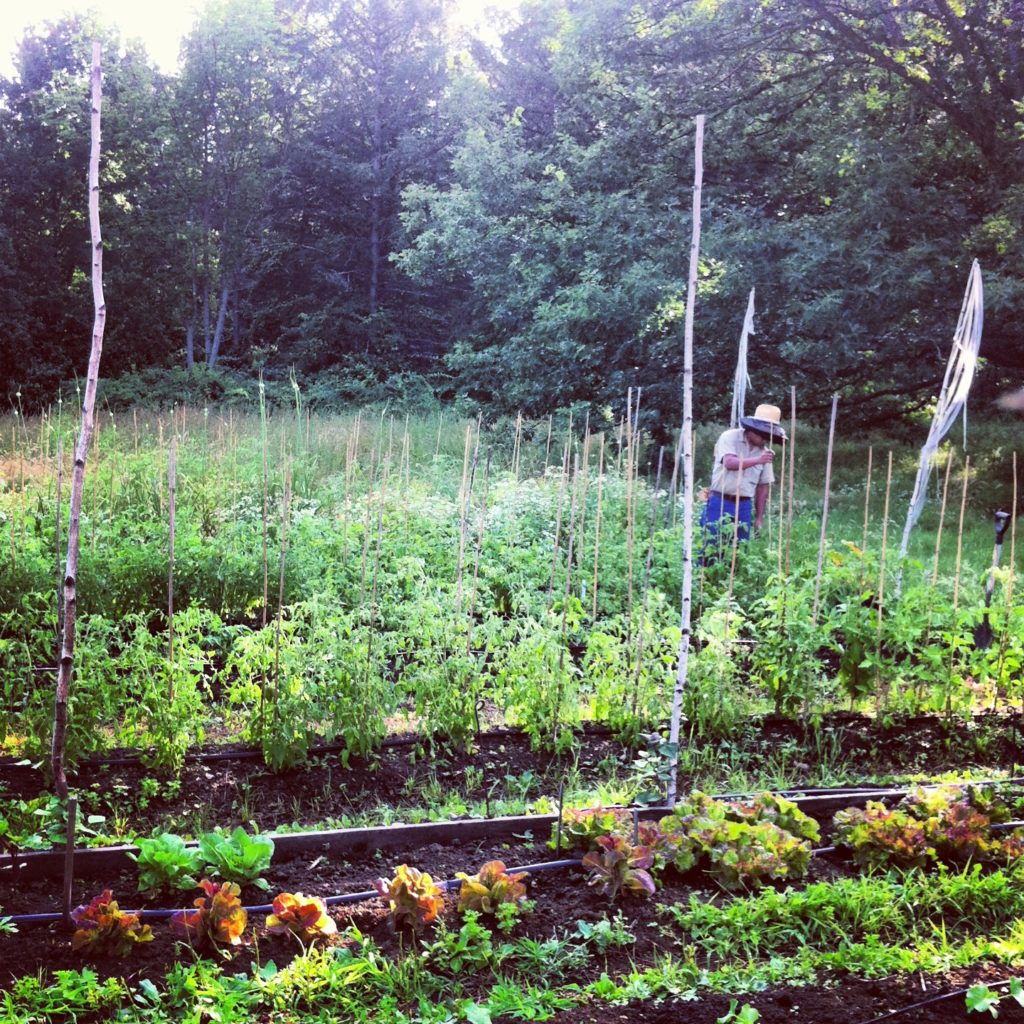
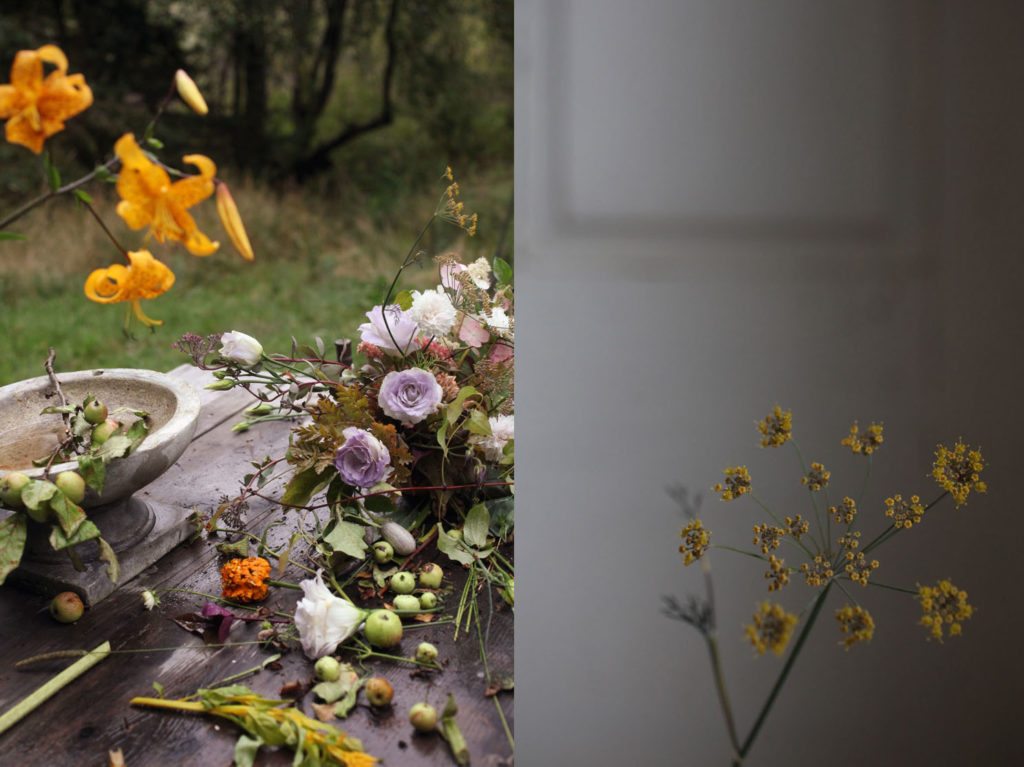
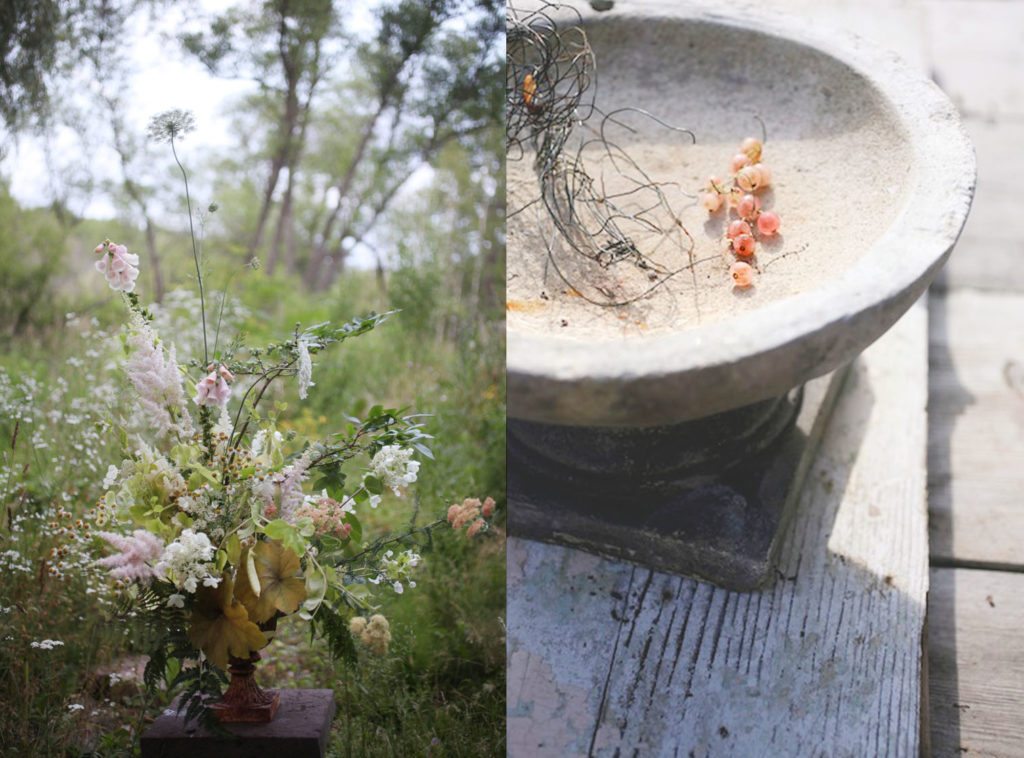
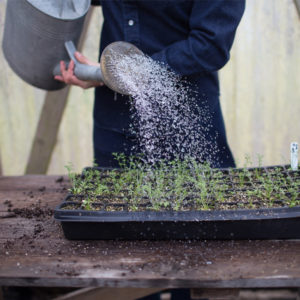
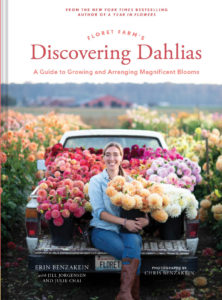
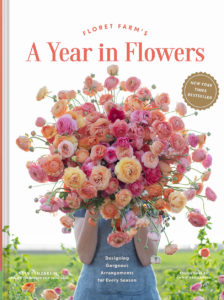
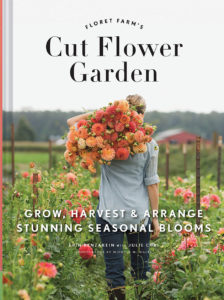

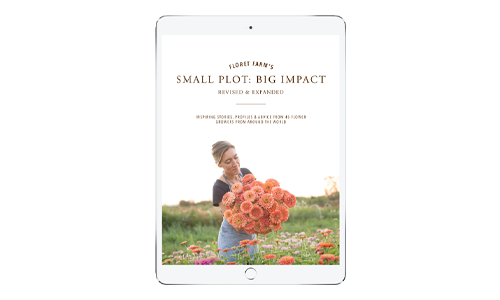
Adri Smith on
Loved the note about staying true to what’s in season (example of mixing fruit with peonies in an arrangement.) quick question – what would be a natural floral, foliage, or fruit to incorporate in a winter arrangement?